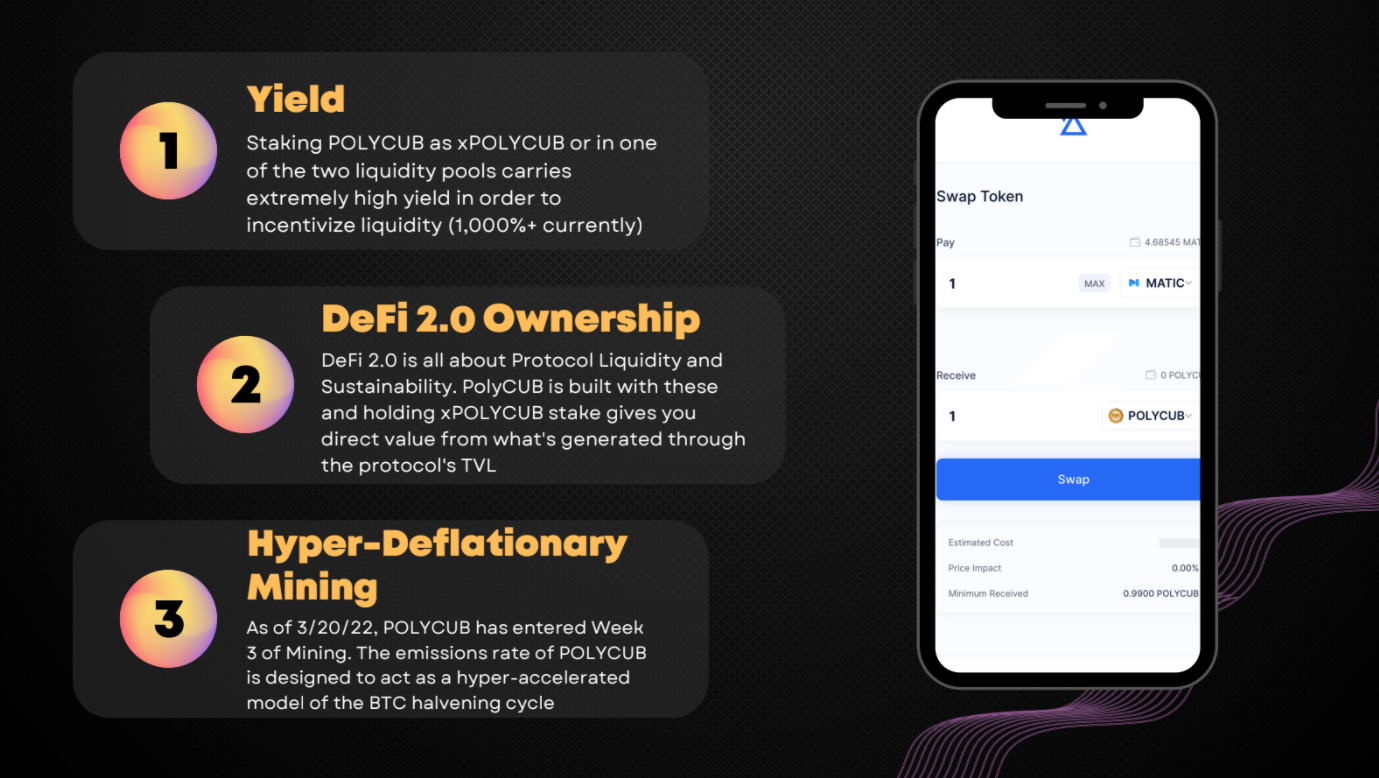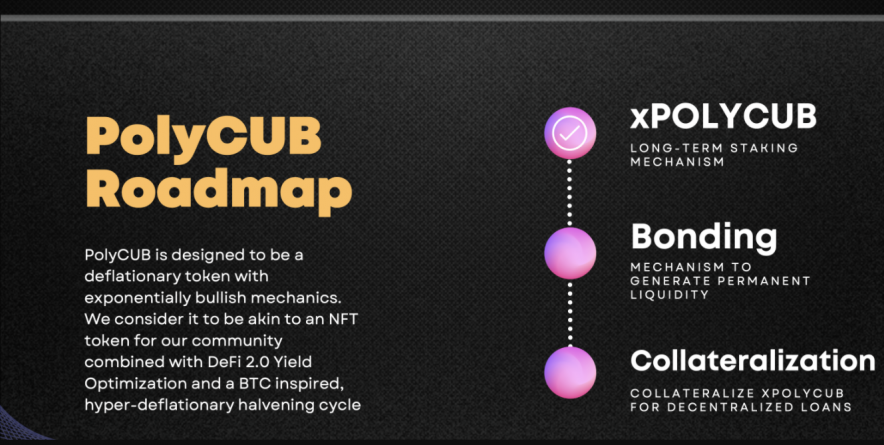The Next-Generation of DeFi Yield Optimizers has arrived: PolyCub

By merging the mechanics from several other successful projects while running thousands of Monte Carlo simulations to create the ideal scenario for yield optimization on the Polygon Network, PolyCUB achieves what few – if any – other projects have achieved before:
A long-term, deflationary, and self-sustainable DeFi ecosystem that maximizes yield generation for user assets.
It’s been less than 20 days since PolyCub launched and yet, several theories that served as the basis for the tokenomics around PolyCub and the game theory behind the ecosystem development have already been proven right by the Leo Finance team:
- A hyper-deflationary token emissions rate leveraged by the incentive of staking (xPOLYCUB) to provide liquidity to LPs in exchange for an extremely high APY encourages a set and forget long-term holding mindset enabled by capping the PolyCub supply at ~7.2 million tokens, guaranteeing that the supply will never grow beyond that emissions rate
- Staking the native token PolyCub into xPolyCub gives the holder a share of the generated value through the TVL in the protocol, while offering an exponential value proposition in relation to the native token value: The PolyCub/xPolyCub ratio will always go up (this can be seen on the https://PolyCub.com/staking page). The value of xPolyCub comes from ongoing emissions and early harvesting penalties: the self-sustainability theory becomes true and token emissions are redirected into the hands of long-term diamond hands in the single-stake vault
- A safe option for safe holders: The PolyCub kingdoms offer the highest yields on the entire Polygon network by leveraging Cross-Composable Yield Optimizing Vaults that operate with management fees which are held by the treasury as Protocol Owned Liquidity (PoL) and ultimately buyback POLYCUB and create endless demand and permanent liquidity.
These three key points generate an incredible value for the community token holders, but they don’t tell the whole story, which is why we’ve seen a massive spike in interest and visits on https://polycub.com. It’s simple, people are doing their own research and they are liking what they see.
The POLYCUB token is designed to go up in value in perpetuity – just as the scarcity dynamics and utility of Bitcoin do for the largest cryptocurrency on the planet.
To add to these three key value propositions, PolyCub is built by the LeoFinance Ecosystem which has one of the longest-standing communities in DeFi with a background of building blockchain apps for more than 3 years. With one of the most active communities in the industry that has tens of thousands of long-term holders, its no wonder that every single day more and more people buy into this innovative ecosystem that happens to be just the second step in a long and ambitious roadmap that aims to provide value and generate many more alpha opportunities for those who do their own research and decide to join this platform as xPOLYCUB stakers.
Long-term Upside for POLYCUB is Cosmical
The PolyCub ecosystem has Farms, Kingdoms vaults and xPolyCub stakin, all of which currently provide APYs in the four figures, but that number is dwarfed when one compares it to the real long-term value proposition in PolyCub’s Roadmap:

The next step for PolyCub that is currently happening as you read this article is Bonding, which provides permanent liquidity to the protocol via POLYCUB-USDC and POLYCUB-WETH bonds. Allowing other bonds in the form of WBTC-WETH, stablecoins and other Kingdoms LP assets creates the opportunity for users to bond external assets and earn greater returns on POLYCUB. These bonds are then held by the Protocol Liquidity and used to buy back POLYCUB and distribute long-term xPOLYCUB LP Incentives.
Once the emissions rate of PolyCub drops to almost zero, the Protocol Liquidity will begin to buy back PolyCub tokens from the market and thus continuously add demand to the token in perpetuity. Then, the protocol will distribute the market-bought PolyCub amongst the Liquidity Pools that will no longer be earning from the emission rate – another self-sustainable theory to be confirmed – and will then be earning from the buyback distribution.
This process will send the vast majority of PolyCub back into the xPolyCub vault, eating away the circulating supply and providing more PolyCub scarcity and more demand for xPolyCub Staking.
Are You a PolyCub believer now?
There’s one more value proposition on the near-term roadmap that is intended to drive value to the diamond paws – the equivalent of diamond hands in the LeoFinance Community – and that is Collateralized Lending: Users will be able to stake their xPOLYCUB tokens into the collateralized loan contract and take out a loan from the Protocol Liquidity in exchange.
The release of POLYCUB provides a glimpse into the future of DeFi 2.0 Yield Optimizers. What we’re seeing take place is the early distribution of a highly scarce asset – with only 7.2 million POLYCUB to ever exist.
That scarce asset is being coupled with the dynamics of long-term, sustainable yield generation through Protocol Owned Liquidity. These mechanics are then combined with Collateralized Lending on xPOLYCUB stake which gives users the option to diamond hand POLYCUB in perpetuity. Instead of selling POLYCUB, users are given the ultimate value proposition to hodl POLYCUB as staked xPOLYCUB, earn 30%+ APY and take out self-paying loans against their stake when they want liquidity.









